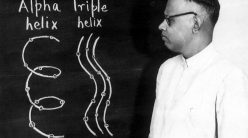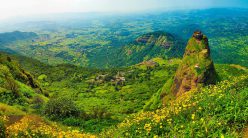Kollegala Sharma has worked as a science communicator for over 40 years. After quitting his PhD in radiation biology, he worked as an Assistant Editor for Science Reporter – CSIR-NIScPR’s magazine – then as a Kannada science columnist in the newspaper Kannada Prabha, and as a chief scientist at CFTRI, Mysuru. He has written articles about science in English and Kannada, and translated science articles from English to Kannada, in the hope of quenching people’s thirst for science in Karnataka. In this interview, he talks about why he chose this field, and why he believes science outreach in regional languages is so important
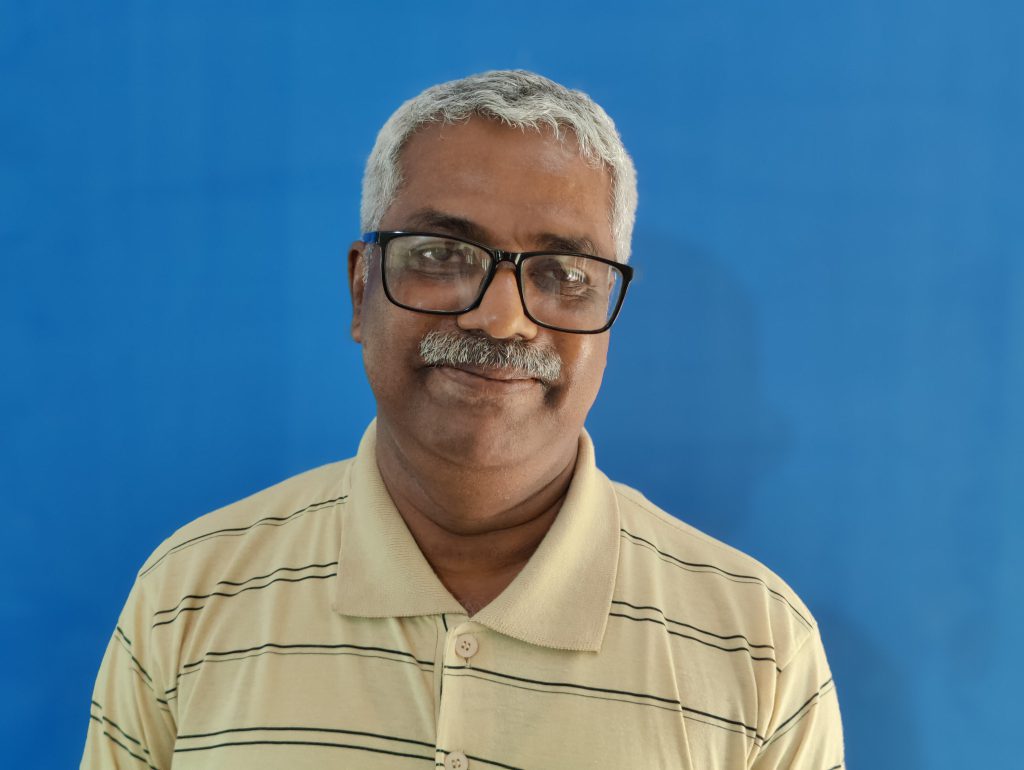
What sparked your interest in science communication in Kannada?
In primary school, it caught my imagination when one of my teachers told us about the stars, planets, and how Earth rotates. Around the same time, I watched the movie Dasavatharam. There was one scene where Varaha avatara brings up the Earth from under the sea. I was totally surprised because I was very young and I never knew that Earth rotates like this and that Earth is a free body. But when I saw that visual, I thought, “What will happen if I go towards the sea while the Earth rotates? Will I drown?” I started reading books in search of the answers.
That was a time when science communication in Kannada was also available. For example, the magazine Sudha began in the 1960s and it carried a one-page science column with tidbits and interesting news. When I was in first PU, BGL Swamy had published a book called Hasuru Honnu. It got a literary award from the Kendra Sahitya Academy even though it was about popular science. In the book, he went on an educational tour to the evergreen forest with the students and he talked about the taxonomy of all the subjects and introduced various plants in the Western Ghats. I always felt, why can’t our teachers teach like this? There was another book called Nakshatra Loka written by Roddam Narasimha’s father, RL Narasimhaiah. That book was fantastic and the opening said that one cannot count the number of stars. That caught my attention. If there are so many stars, how do we count them? During my college days, I had read Abraham Kovoor’s book on rationality and superstition called Gods, Demon & Spirits, which influenced a lot of us at that time.
Growing up, I saw emphasis on science research, science communication, science education and Kannada, and it seemed that everything was coming together. It was a time when Karnataka Rajya Vignana Parishat was established and it was setting up branches all over Karnataka. All of these influenced me to look at science and science communication.
Why do you think it is important for science communication to be vernacular?
I say that there is a demand for everything – for science content in any form or in any media in almost all languages. And we are not creating enough.
As a science communicator I have always felt a gap between scientists and science communicators. Generally, there is a belief that a science communicator dilutes the understanding of science, but I don’t think this is true.
The third thing is the need. If you think of Karnataka, every year we have about eight lakh students passing out of the 10th standard. After that, only a small group, about 20%, have the opportunity to study science, while most do not. So their connection with science stops at the10th standard level. This is a huge population, and their need for science information has to be satisfied through Kannada only. Do we have that kind of media? Even on the internet, do we have that kind of content available in Kannada? These are the questions that we need to ask.
And how do we fill this gap? Of course, we can always take the help of technology and translate the content into Kannada. But machine translation doesn’t understand the subject, so there could be a lot of misinterpretation and mistranslation when using tools like Google. That is why we need to do more science translation in Kannada.
Recently, I translated a few of the press releases sent by IISc into Kannada and sent them to newspapers, web magazines and they were all published. The press release on novel diabetic footwear was published in Deccan Herald. I wrote an extended article including other efforts elsewhere and published it in Kannada in Prajavani. Though both articles were published by the same firm, the Kannada version received more attention and the newspaper diverted all calls to me. This is just one example of how communication in Kannada can make an impact.

What are the challenges of being a science communicator in Kannada?
The challenge that I have not been able to breach – maybe it is my fault; I don’t know – is this gap between the scientists and the science communicators. There is a bit of a trust deficit between the two communities.
Most of the scientists with whom I have spoken feel that science is precise, and therefore when we write it in simple language, the precision is lost. I disagree: not all science is precise. Take for example, anything that you do in molecular biology. We say that yes, we have manipulated this gene with CRISPR, but then again, we talk about the errors. And the population. And the sample size. Oh, nothing is precise. The only thing is – how do we communicate what we are doing? The excitement of that is what a common person needs to know.
If you dissect the language of science that we use within laboratory walls, for the most part, you have only a few concepts that need a precise word. For the rest, any other everyday vocabulary that is available in your language is sufficient to explain that.
But I’m always surprised that scientists are so reluctant to talk about their work. Anything that we do will always be interesting to people. Not everything has to be formidable and on a pedestal. Why can’t we gossip about science and make it part of our everyday lives? I’m putting it in a positive sense, not in the negative sense. So why can’t we make small talk about science? What stops us from doing that?
Another problem that we face is with illustrations. Illustrations are absolutely necessary with the science text because they complement some of the metaphorical meanings of science concepts. So many illustrations are available in textbooks and they are in English. And to change them into Kannada, there is a lot of difficulty because of copyright issues. We don’t have enough illustrators who can understand science and also provide illustrations with text from Indian languages. That is one thing that is missing and somewhere we need to give a push for that.
What kind of impact have you seen from such science communication efforts in Kannada, especially in rural communities? Are there any interesting anecdotes you can share?
Forty years ago when I wrote about prenatal diagnosis, I met someone at a bus stand in Mangalore. He said that he was married to his relative. The first child had hydrocephalus – it had a huge head and the baby died. He had read my article and he asked me, “Should we go for a second child or not?” That’s a difficult question for anybody to answer.
Once a teacher-friend in B Matakere, HD Kote taluk, said that they were finding it difficult to teach the nervous system and coordination to 9th standard students as the school didn’t have a biology teacher. They also complained that it was difficult to teach as there were no hands-on activities for these things, whereas physics and mathematics do. So, I took up the challenge, went and stayed there in the school for one week, and started teaching.
There were 99 students, all from tribal areas, and when I read their textbook, it referred to the brain as “mastishka” (ಮಸ್ತಿಷ್ಕ). But when I used that word, the whole class stared at me in silence. So I tried a different word. Do you know “medulu”? (ಮೆದುಳು) No response. So then what could I do? I just changed track; I talked about something else and asked them what they like to eat. And they said that they catch birds. So I asked, birds’ “tale maamsa chennagirutta”? (ತಲೆ ಮಾಂಸ ಚೆನ್ನಾಗಿರುತ್ತಾ ?)[“Is bird brain meat tasty?”(tale=head)] Oh, the whole class shouted. There were lots of responses about the quality of tale maamsa. Then I pointed out that that is medulu; tale maamsa is medulu. And then I learned from the children how it looks, what its texture is, and other details. I think this is where we are driving people away from science: the language of science is so removed from the terms we use in daily conversation.
Science interests everybody. But the way we teach, the way we tell them, matters. Science communication is a never-ending process. If I know something, it doesn’t mean that everybody else knows it already. It also means that I don’t have to communicate everything that I know to everyone. Communicate one point at one time: they need to know only a few things at that time, and that gets them interested. Later, if they want to learn more, they will come back to you.
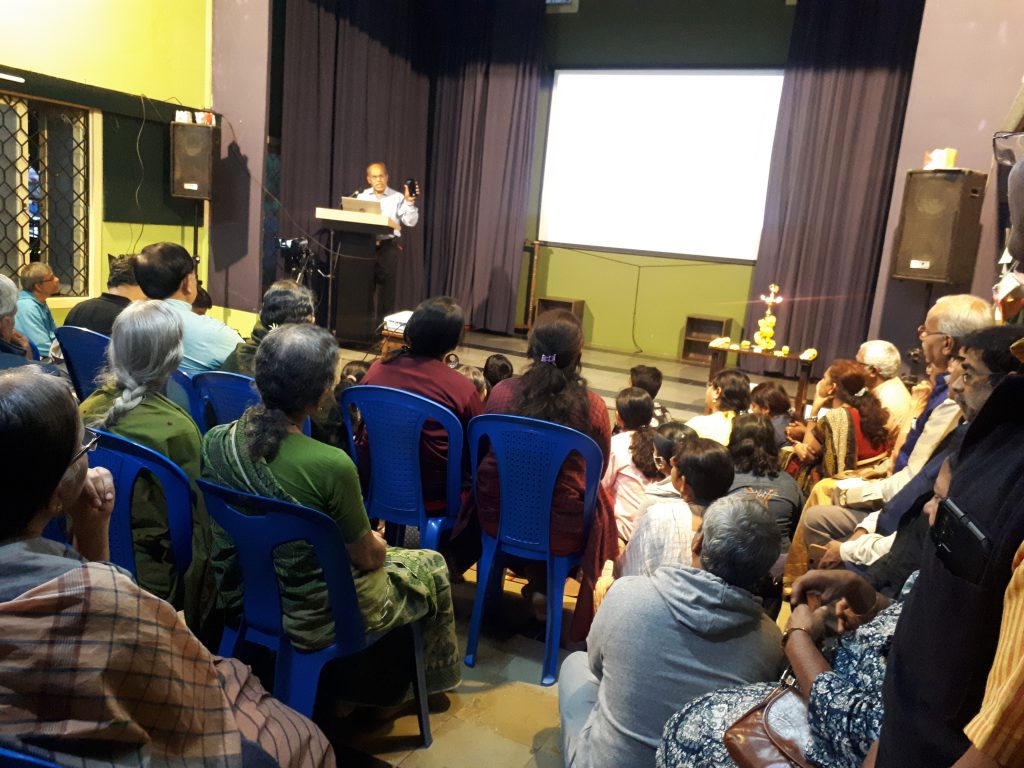
You have been hosting a science podcast in Kannada and the Science Sanje talks. Can you tell us a bit more about these initiatives and any new projects you are working on?
The National Centre for Biological Sciences (NCBS) had worked on a project called Science Cafe where you go to a residential colony and gather people and talk to them in an informal setting about science. Taking off from that, once a month we have started what is called as Science Sanje: an evening of science, here in Mysuru, in Kannada. The venue will be where cultural programs are typically held. We chose that because we knew most public lectures on science are held either at IISc or at Mysuru, either in the university auditorium or in CFTRI. These venues are not typically accessible to the general public, and even when they are, people hesitate to come in. We thought, why not go to them?
We have held five programmes so far and we get around 100-150 audience members. These are not captive audiences. Every time, the audience changes and this is something that we are finding very interesting because it tells us that people are interested in science. They want to know about it. We have to take the extra step to go out and tell them about it.
But there are two hurdles to this. One: we need scientists who are ready to come to rural areas and talk to people in their language – that is not difficult. You don’t have to speak in academic Kannada, you just have to speak in everyday Kannada, even if there is English mixed in. Two: many scientists hesitate to speak in Kannada. They think that it is very difficult and the concepts cannot be conveyed. That is not true, and I want to assure them that if there are scientists who are ready to come, we can sit together – science communicators and scientists can sit together for half an hour and understand their topic. Then we can plan how that can be curated for the general public.
There are other efforts, of course. DST’s Vigyan Prasar is already doing some work to have a project called Bhasha, which I am part of. It is trying to communicate science in different Indian languages. In Kannada, we have a project called Kutuhali and under its banner, we are also publishing a magazine for which we need content and we are training people using workshops and other modes. Translation is another aspect of this project.
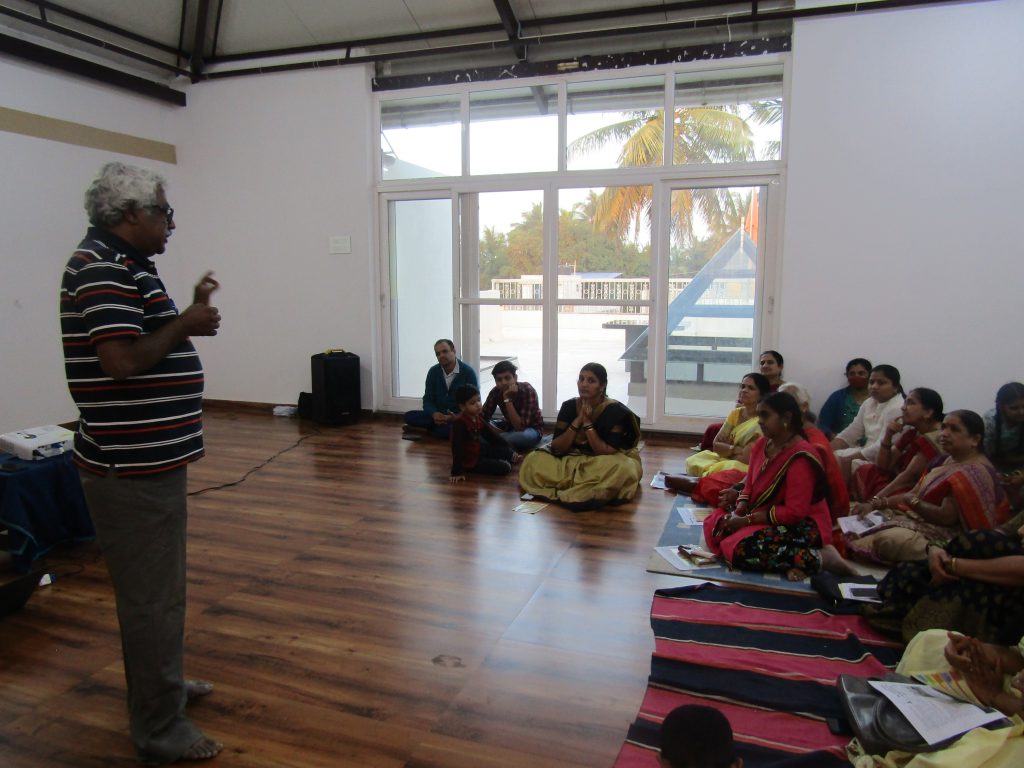
In your opinion, what can be done to improve the state of science communication in the country? Do you think there are sufficient support systems/ mechanisms to encourage such efforts?
In science communication, there are two levels that I look at. One is science education where we communicate to the student community in such a way that the students understand the specifics of science. The other is for the general public, where they don’t need specifics, but they need to respond to science, and they need to understand the role of science in their society. Both are different, but both can be done in Indian languages.
You want people to know about science and respect science. They do have a lot of respect for science, but they are also afraid of it because they think that it is something that they cannot understand. So, we have to make them love science, and remove that fear. To do that, we need to go to them and talk to them. And we need more scientists ready to go to villages or government schools and talk. As of now, almost all outreach programmes are concentrated in urban areas. We want to do more outside of it and outreach doesn’t mean that we show them what we have done. Outreach means we show them that science is not something that is magic. Science is something that they can also do and the next part of that is citizen science.
My concern is the future – climate change or climate action requires a lot of science outreach. And that has to be in citizen science mode. If that has to happen, scientists have to speak in Kannada, in Tamil, Telugu, and work with people. How many scientists are prepared to do this, is the question.
